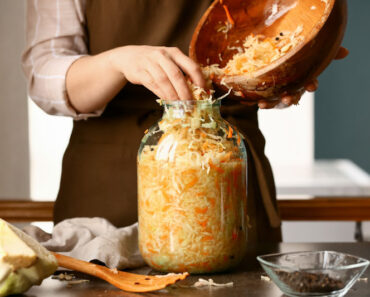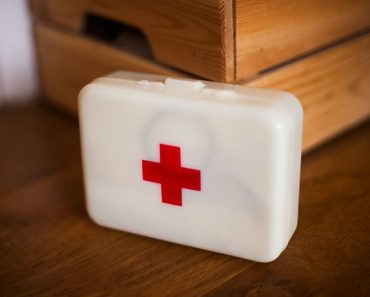My wife is one of those people obsessed with cleanliness, and she wants everything inside our home to be clean and spotless. After a few years of using so many chemical products to clean the house, she realized that these products were doing as much harm as good both inside and outside the home. She decided it was time to look for “greener” alternatives and started making her own natural cleaners.
Since her grandmother’s time, she learned that keeping the house clean only required soap and water, plus the time needed to scrub to keep everything spotless. However, since back then, many chemicals have been introduced into our cleaning supplies to help us save time. Natural cleaners are still available, but these are not always reasonably priced.
While you can still spray disinfectants laden with chemicals on countertops and every possible surface inside your home to kill every microscopic thing living on those surfaces, it’s better to find safer alternatives. The secret of every clean home in the United States is, and always was soap and water, and it has always helped prevent illnesses.
However, in recent years due to the pandemic, the word “disinfection” keeps being tossed out there, and everyone tells you that you need to buy this and that to help disinfect your home. The truth is that this is mostly a marketing scheme and studies show that soap and water will remove almost all dirt, germs, and contamination from surfaces inside your home.
And if you don’t feel comfortable with using just soap and water, how about using natural cleaners?
Vinegar is a cleaner that will kill almost any microbe, even though it leaves an odor that’s not to everyone’s liking. You can make a homemade cleaning solution and add essential oils since these are optimal additions to your homemade cleaning collection. There are essential oils that are both aromatic and effective cleaners.
Earn Your Food Independence NOW
My wife took things even further, and being the “let’s grow everything” type; she started looking into plants that she might cultivate that would become a valuable addition to her homemade cleaning arsenal. She has a list of effective plants that pretty much anyone can grow and harvest to make natural cleaners. Fresh and dried herbs can be used as a tea in cleaning materials, and with a little bit of garden space, patience, and care, you can keep the house clean without the need to use chemical-laden cleaners.
You can get started with the following plants and recipes.
1. Yucca (Yucca glauca)
Parts used to make natural cleaners: root.
This plant is also known as soapweed yucca due to its long history of being used as a soap substitute. The roots of yucca contain saponins, and not only do these roots produce that soapy foam, but they also have antibacterial properties.
If you harvest soapweed yucca fresh, you can pound the roots of the plant with a hammer or rock on a hard surface until they create suds. If you want to use dry roots, use ¼ tablespoon of chopped root to a quart of water and bring to a boil. You should let the roots simmer until suds begin to form and then let it simmer some more until the resulting soap has a thickness to your liking.
Yucca is pretty easy to grow, and people often believe that the plant can grow only in desert regions. However, the plant is hardy in Zones 4 to 10, and it tolerates frost pretty well. It can grow in a variety of soils as long as it’s planted in full sun, and it doesn’t need a lot of water or care to be successful.
2. Pine (Pinus spp.)
Parts used to make natural cleaners: needle, sap.
The good part about using pine needles for natural cleaners is that you can collect them year-round since pine is an evergreen tree. Pine is well known for its medicinal use both internally and externally, but few people know that it’s also a good cleaning agent. In fact, Turpentine which is made from the sap of pines, is often added to cleaning supplies due to its valuable antiseptic properties. The needles also have antiseptic qualities and are much easier to work with than sap.
To grow pine trees on your properties, you can try growing them from seeds which can be a challenging and unpredictable task, or you can buy saplings and increase your chances of success. Plant the saplings in full to partial sun and do so during late fall or in spring. Pick an area with good drainage since pines don’t like too much water. These trees are not picky about the soil type and will grow in zones 3 to 7.
3. Sage (Salvia officinalis)
Parts used to make natural cleaners: leaves.
Sage was used in ancient times as an antibacterial, antiseptic, and antifungal. In fact, recent laboratory tests confirmed the knowledge of our ancestors, and they showed that sage is also effective against salmonella and E.coli. Sage is used in both smoke cleaning sticks and smudge sticks which are often used for ceremonial purposes. Burning sage in your home will help clean the air of bacteria, and this was a widely used practice in the past in European hospitals.
Sage is an easy plant to grow, and it’s cold-hardy. It thrives in zone 4 to 8, and it only requires a little bit of care and some mulching in areas with colder climates. The plant grows well in a variety of soils as long as good drainage is provided. You can pick leaves through the growing season for your homemade cleaners.
4. Rosemary (Rosmarinus officinalis)
Parts used to make natural cleaners: leaves.
Rosemary is another plant with known antibacterial properties, and the leaves were also used due to their spasmolytic actions. They are used orally to treat dyspeptic complaints, and externally they are used to alleviate rheumatic problems and circulatory disorders.
The plant likes well-drained soil and can be grown indoors and outdoors rather easily. Rosemary grows well in zones 7 to 10, and if you live in areas with harsh winters, it’s better to grow it in containers and bring it indoors during the colder months. Some folks grow them in their gardens in a sheltered spot, and they use a lot of mulch to protect the plants during the winter. However, this is often a gamble, and you shouldn’t count on it.
When using rosemary for natural cleaners, cut the growth tips whenever you like during the growing season. Pick the green steams and leave the woody ones so that the plant can grow successfully between cuttings.
5. Thyme (Thymus vulgaris)
Parts used to make natural cleaners: leaves.
Thyme is an antibacterial and antifungal plant. There are quite a few varieties of thyme that can be used for cleaning purposes, and they are hardy anywhere between zones 2 to 10. However, the most common types are known to thrive in zones 5 to 9.
The plant does well in slightly alkaline soil, and it’s perfect for a rock garden, being a creeper that doesn’t grow very tall. The stones beneath the plant will provide adequate drainage and will also prevent leaf root, which is often a problem for many gardeners. Harvest the plant by clipping the green growth just beyond the woody stems.
And here are a few homemade recipes:
Pine cleaner
Ingredients:
- 4 cups distilled water
- 1 tablespoon of liquid yucca soap
- ½ cup of fresh pine needles
- 10 drops pine essential oil (optional)
Directions:
1. Bring the water to a boil and then pour it over the pine needles. Cover the container and set it aside.
2. Check the pine tea and once it has cooled, strain it and return it to the container.
3. Add the liquid yucca soap to the container and stir.
4. Add the essential oil if you want to increase the scent.
5. Pour into a spray bottle and use as needed.
Note: This cleaner should be used for your floors and furniture, and it does a great job of making them shine. You can store the natural cleaner for 2-3 weeks in a cold place.
Bathroom sink scrub
Ingredients:
- 2 tablespoons vinegar
- 1 tablespoon coarsely ground fresh rosemary
- 1 tablespoon coarsely ground fresh sage
- 2 tablespoons cream of tartar
Directions:
- Mix the ground herbs and cream together in a small container
- Pour in the vinegar and stir to make a paste
- Using a clean cloth, you can rub one tablespoon of this scrub on the surface of the sink and then rinse with clean water.
Note: This scrub works great on almost all ceramic surfaces and is lightly abrasive. However, be careful when using it on delicate surfaces. You can multiply the ingredients to make as much cleaner as needed, but the ingredients listed here will be more than enough to clean the average-sized sink. If you have any leftover scrub, you can store it in a cabinet for up to two weeks. If you notice it dried out, add more vinegar to hydrate the scrub.
Counter wipes
Ingredients:
- 3 (6×6) square cotton fabric
- 1 pint jar with lid
- 1 cup of distilled water
- 2 tablespoons fresh thyme leaves
- 1 ounce castile soap
- 8 drops essential oil (optional)
Directions:
1. Make a strong thyme using distilled water and the thyme leaves. Cover the cup and allow the tea to cool before straining.
2. Add the castile soap to the strained tea and essential oil if you like.
2. Pour the mix into the pint jar.
3. Fold the cotton fabric squares and immerse them in the tea.
4. Close the jar with the lid and store it until you need to use the wipes.
Note: You can keep these handy for disinfecting surfaces inside your home. You can even wash the clothes after each use and return them to the jar. Change the cleaning solution every week or two.
A final word
Disinfecting and cleaning our homes usually comes with a cost when using chemical disinfectants. More and more studies show the damaging effects these cleaners have on our health and the environment. To avoid these chemical cleaners altogether, you can make your own natural cleaners, such as those listed in this article. Grow your own ingredients, and you will never run out of cleaning supplies.



























